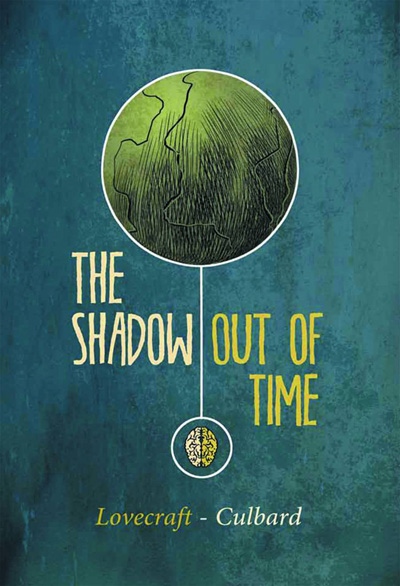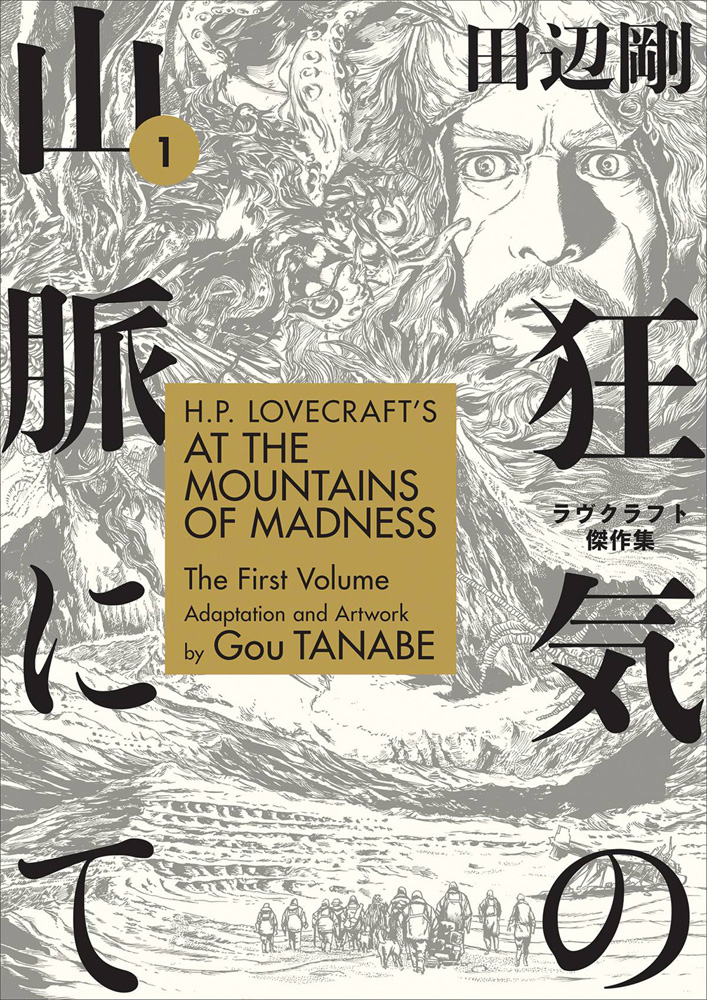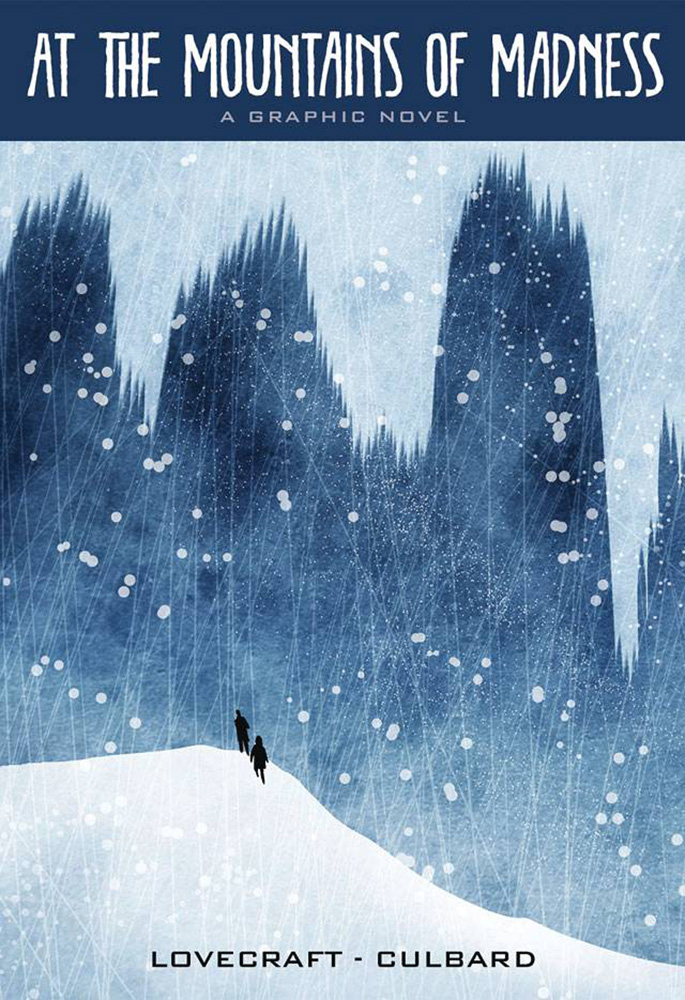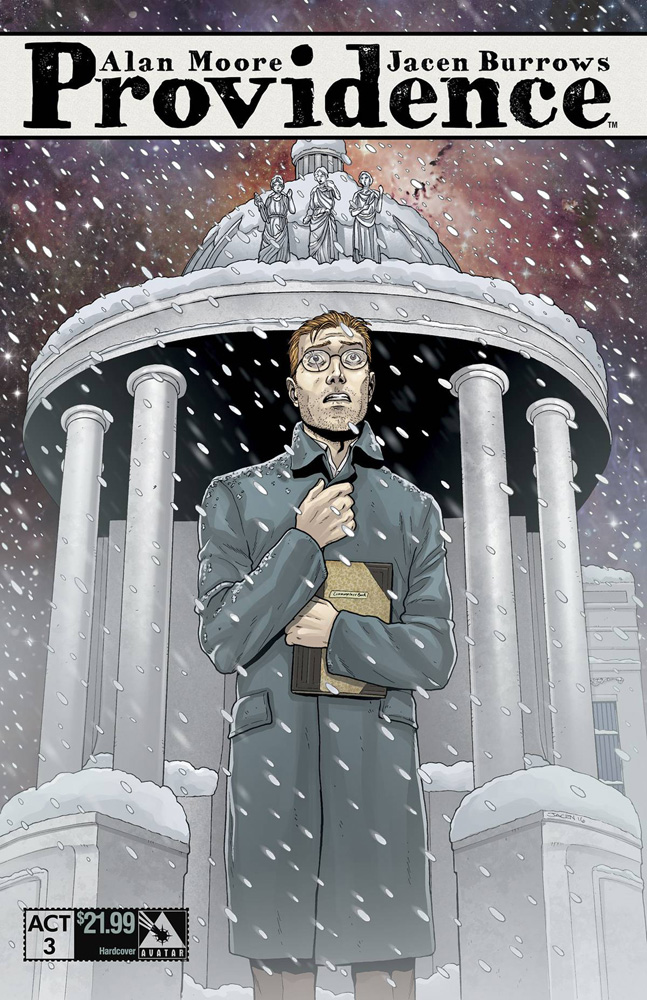Markley’s Fevered Brain: The Madness
by Wayne Markley
Contrary to what you might think from the title of this blog, I am not going to be writing about why I have spent the last 35 years working in comics, which is truly madness. But what I am going to write about is the series of graphic novels (by different creators and publishers) adapting or paying homage to or being inspired by H.P. Lovecraft’s Cthulhu writings and about At the Mountains of Madness in particular. There are three manga titles here and a full color graphic novel by one of my favorite creators, I.N.J. Culbard, the artist on Wild’s End, Everything, and Brass Sun.
First off, a little background. H. P. Lovecraft was a writer and editor who lived in Providence, Rhode Island in the early 1900s. He wrote a number of stories that were a mix of horror and weird fiction. During his life his stories only appeared in pulp magazines and he was never able to make a living off it and died in poverty. After his death, his imaginative stories would be rediscovered and collected into books and paperbacks. His stories would become a major cultural phenomenon. Throughout his writings he developed the concept known as the Cthulhu Mythos, which would become a major influence on the whole world of horror pulps and horror writing in general, as well as being the inspiration for everything from bands to games to movies to merchandise (and a major influence in Marvel’s horror mythos and Dr. Strange in particular). Lovecraft’s stories are known for their atmosphere and sense of forbidding. He took what Edgar Allen Poe had started to a whole new level and on a majestic scale. His stories would discuss long gone gods that might still be hiding in the shadows and in the darkness. Many of his stories leave you with a sense of uneasiness and with the fear of something just outside of your vision. He was also very influential in the storytelling of Junji Ito (one of my favorite manga storytellers).
First off. we have two volumes of a manga adapting Lovecraft’s At the Mountains of Madness by Gou Tanabe. Both of these book are black and white and are published by Dark Horse Comics. These are the most faithful adaptations, and arguably the best as the art and storytelling really captures the creepy and suspense that the Lovecraft story has. Tanbe’s art is without question manga, but it has a very western feel to it and reminds me of a tighter drawn Tom Sutton. His illustrations really convey the feeling of dread and fear that the whole Cthulhu Mythos is based upon. His characters are realistic looking and the detail in the background is amazing. Also, the tonal work is stunning, creating so many different shades and shadows within the black and white artwork you actually start to forget you are reading a story. Again, capturing Lovecraft’s intentions. The story is set in the 1930s and revolves around a group of explorers at the Antarctic who discover a long lost cyclopean alien that is hidden there. Over these two volumes you get the complete story of why they are there, how they make these discoveries, and what their ultimate fate is. Between these two volumes the story runs almost 700 pages yet it never drags and does not have any of the quick shots of humor that a lot of manga does. Tanbe never lets up with the atmosphere and amazing details in his art. Truly a chilling piece of work that I would highly recommend for any horror fan and it is a must for any Lovecraft fan.
Gou Tanabe first book translated and published by Dark Horse was H.P. Lovecraft’s The Hound and Other Stories. This is a shorter book, coming in just under 200 pages, and has four adaptations of Lovecraft stories. As with At the Mountains of Madness, all of these stories tie into the whole Cthulhu Mythos although none of these stories are as direct in their details as Mountains is. In these stories Cthulhu is ether referenced to or hinted at. As with At the Mountains of Madness, the art is atmospheric and amazingly detailed. When I first read this book I enjoyed it but nowhere as near as much as I enjoyed Mountains. At the time, I thought the printing was too dark and it was difficult at times to make out what was happening. I went back and re-read it after reading At the Mountains of Madness and I changed my mind. It takes some adjustment to make out all of the details in his work as it is so subtle, the uses of light and dark, it just takes more time and focus to really appreciate his storytelling. This is a perfect companion book for the two volume set of At the Mountains of Madness.
Just for the record, and because I enjoyed these first three books so much, I went in search of Gou Tanabe’s other work. There is a three volume work called Mr. Nobody that as far as I can tell is only available in Japanese and German. I bought a copy of the German version and it is really good, from what I could can tell from the pictures. It is a murder mystery and his use of black and white is once again masterful, but it is not as moody as his Lovecraft adaptations. He also has a two volume book called Kasane and a set of books called The Outsider, neither of which I could find at a price I wanted to pay, or in English. All three of these books pre-date his Lovecraft work.
Next we have At the Mountains of Madness (again), this time from publisher Selfmadehero and written and drawn by I.N.J. Culbard. I really enjoy Culbard’s art style and storytelling but it is worlds apart from Gou Tanbe. Culbard’s art style if far more open and breezy and while it tells the same story of a lost cavitation in Antarctica, it looks like a completely different story. This is not a bad thing. In fact, I love how you can read two adaptations of the same work and they both are equally as good with such starkly different appearances. Culbard’s art style really works for this story that is set in the 1930s, as anyone who has also read his excellent miniseries The New Deadwardians would understand, he captures early 1900s perfectly. A very different visual look than that of the manga but just as good, although it is significantly shorter, coming in at 82 pages. Culbard is no stranger to Lovecraft as he has also done adaptations of The Case of Charles Dexter Ward, The Shadow Out of Time, The Dream-Quest of Unknown Kadath, and an anthology called Lovecraft Four Classic Horror Stories. All also from Selfmadehero.
I would be remiss if I did not also mention Alan Moore’s excellent series Providence. Providence was a 12 part comic Alan did that is very loosely based on H.P Lovecraft’s real life. There is so much Lovecraftian lore buried within this story it will make you head spin. The more you love Lovecraft, the more you will get out of the stories. But with no knowledge of Lovecraft this is still a tremendous read. Unfortunately, for reason I don’t understand, Avatar has let most of the collections go out of print. I suspect at some point down the road someone will do a complete collection of all 12 issues and the companion series to it, The Courtyard and The Neonomicon. This is just something to keep an eye out for if you come across it.
That is it for this blog and for this year. I am sure a number of you have read and enjoyed Lovecraft’s writing over the years. What are your favorite stories? Have you read any of these adaptations? I would like to know. I can be reached at MFBWAY@AOL.COM or on Facebook at Wayne Markley. All of the words and opinions here are mine and do not reflect the Westfield Company or their employees. I truly hope all of you have a nice holiday season and a great New Year. As always….
Thank you.





